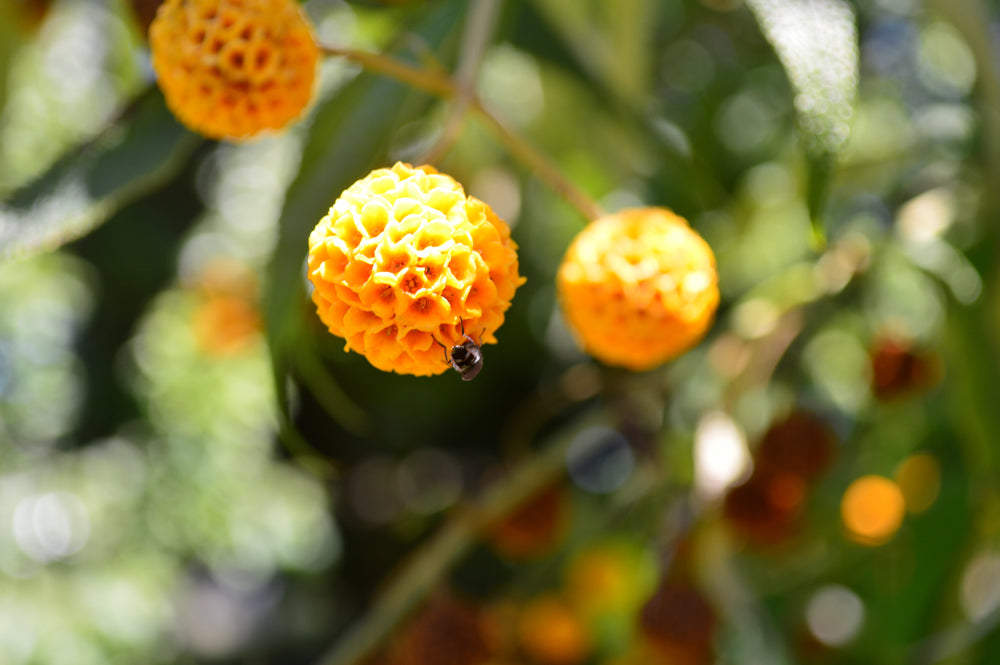We incorporate natural extracts to provide your pets and horses with safe, effective products.
Take a look below at the natural ingredients we use in our products and the science behind their natural healing properties.
Matico
The leaves of Buddleja globosa Hope (Buddlejaceae), known as “Matico” in Chile, are widely used in folk medicine due to their wound healing effects. The Matico leaves have been proven to exhibit anti-inflammatory and analgesic effects while also being a strong anti-oxidant.


How it works:
Matico is involved in each step of the wound healing process. The process involves reducing inflammation, cell proliferation, and contraction of collagen. Additionally, the healing process can be hampered by the presence of oxygen free radicals.
Matico exhibits anti-inflammatory effects by inhibiting harmful cells, like the tumor necrosis factor. This ability to discourage certain harmful cells allows the body to be protected from oxygen free radicals which are damaging to bio membranes. This in turn, has the anti-inflammatory effects on wounds that Matico is known for. Reducing the inflammation is the first step in the wound healing process.
The phenylethanoids and flavonoids present in Matico leaves are the main driver for the anti-oxidant affects. The anti-oxidant effects help speed up the healing process while protecting the cells involved in wound healing. Furthermore, there have been studies showing Matico can increase fibroblast growth. Increasing fibroblast growth is attributed to faster wound healing.
Matico’s pain reducing effects occur due to Matico’s ability to hinder certain inflammatory cells like Prostaglandin E2. In stopping these cells that increase inflammation, Matico is able to reduce inflammation and thus reduce pain. Also, Matico has been shown to activate opioid receptors, which also results in the angelic effects shown.
Studies
Journal of Ethnopharmacology 116 (2008) 263–269 . Analgesic, Anti-inflammatory and Antioxidant Properties of Buddleja globosa, Buddlejaceae. N. Backhouse, L. Rosales, C. Apablaza, L. Go ̈ıty, S. Erazo, R. Negrete, C. Theodoluz, J. Rodr ́ıguez, C. Delporte. 16 November 2007
Journal of Ethnopharmacology 119 (2008) 160–165. Antinociceptive Activity of Buddleja Globosa (matico) in Several Models of Pain. Nadine Backhouse, Carla Delporte, Cecia Apablaza, Mariela Farías, León Goïty, Sylvia Arrau, Rosa Negrete, Consuelo Castro, Hugo Miranda. 19 June 2008
Journal of Ethnopharmacology 77 (2001) 219–226. Effects of Buddleja Globosa Leaf and Its Constituents Relevant to Wound Healing. A.Y. Mensah, J. Sampson, P.J. Houghton, P.J. Hylands, J. Westbrook, M. Dunn, M.A. Hughes, G.W. Cherry. 26 June 2001
Dragon's Blood
Dragon’s Blood is one of the most well-known and renowned plants used in various parts of the world for many health benefits, most specifically wound healing. It had been used as far back as in the times of ancient Greece and Rome. It is believed Dragon’s Blood originated from an Indian Ocean Island called Socotra, which is now part of Yemen. The term “Dragon’s Blood” comes from the red sap from the tree family of Croton Lechleri, which grows in Mexico, Venezuela, Ecuador, Peru and Brazil. In the Amazon and throughout South America, Dragon’s Blood is used frequently as a liquid bandage.

The Benefits of Dragon’s Blood are Numerous:
Wound Healing
When applied topically, Dragon’s Blood has been proven to increase wound healing. It does this by increasing the amount of cells called fibroblasts. Fibroblasts are instrumental in wound healing, because it makes the collagen and cellular matrix that closes up wounds. Dragon’s Blood also forms a film above the wound, which can help protect the wound from infection.
Immunomodulatory Activity
Dragon’s Blood exhibits a potent inhibitory activity on complement systems and inhibited the proliferation of activated T-cells (Gupta). This can have positive affects in regulating the immune system.
Anti-ulcer
Extracts from the Croton tree are able to inhibit the ion transport across the ileum. Inhibiting the transport will can aide in the reduction of gastrointestinal ulcers.
Anti-Inflammatory
The sap from the Croton tree is able to inhibit inflammatory pathways, thus reducing the inflammation cellular cascade.
Antimicrobial and Antiviral
There are certain compounds in the sap of Dragon’s blood that have antimicrobial and antiviral properties. Specifically, Dragon’s Blood can inhibit incredibly harmful bacteria including Staphylococcus aureus and Salmonella typhimurium. Antiviral properties of Dragon’s Blood have also been researched. Extracts of the sap have been reported to have antiviral activity against influenza, parainfluenza, Herpes simplex viruses I and II, and Hepatitis A and B (Gupta).
Antitumor
It has been indicated that Dragon’s Blood has cytotoxicity affects. These cytotoxic effects are harmful to tumors and research is ongoing for Dragon’s Blood as a treatment for cancer.
Anti-Oxidant
Dragon’s Blood targets free radicals and destroys them. It has also been studied that Dragon’s Blood can speed up the body’s own ability in destroying free radicals by increasing cells that target and destroy free radicals.
Pain Reliving Effects
Dragon’s Blood has several compounds that have been confirmed to have analgesic affects.
Studies
Dragon’s Blood: Journal of Ethnopharmacology 115 (2008) 361–380 , Dragon’s Blood: Botany, Chemistry and Therapeutic Uses. Deepika Gupta, Bruce Bleakley, Rajinder K. Gupta, 22 October 2007




